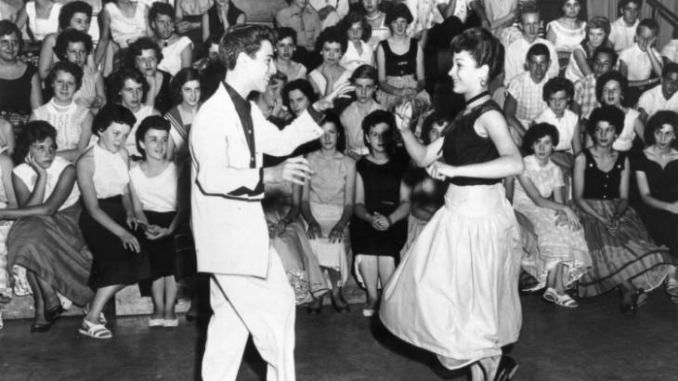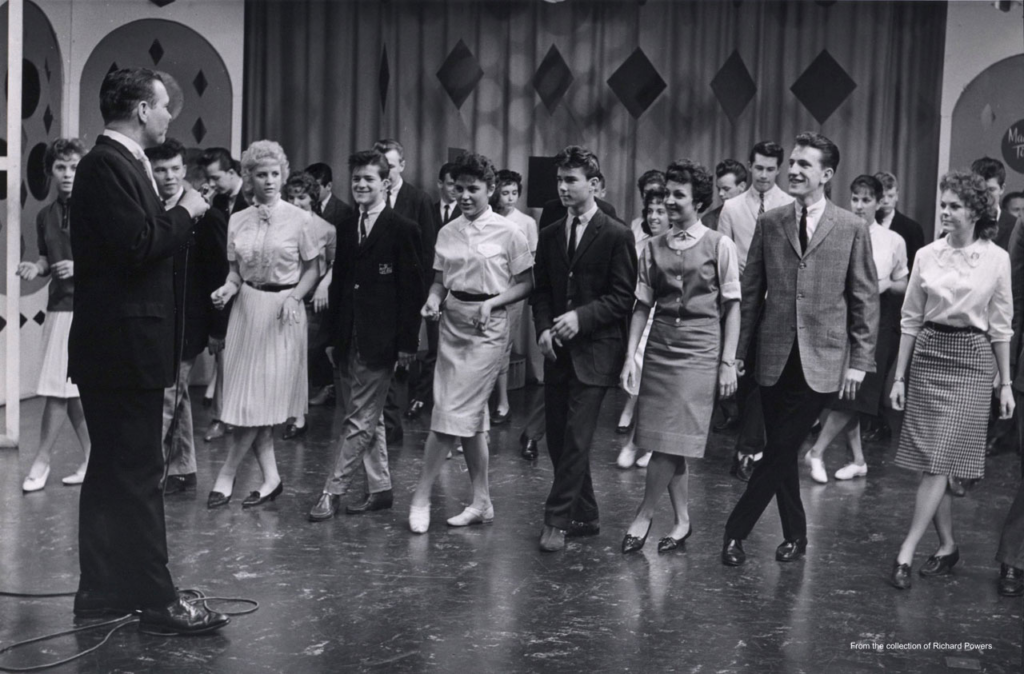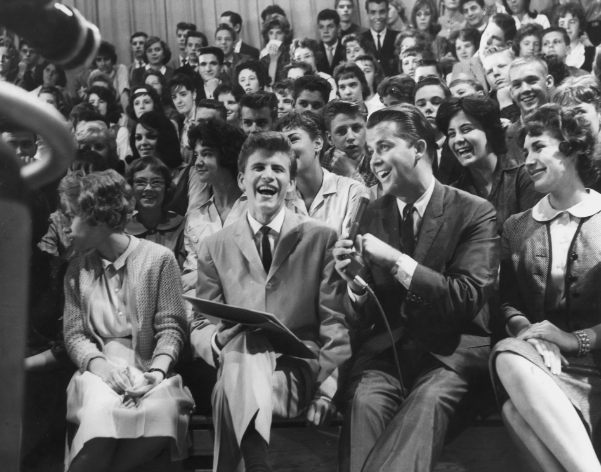
To viewers, the teenagers on American Bandstand looked carefree—dancing, smiling, and enjoying the music. But what most people didn’t know was that those dancers had to follow a strict set of rules to keep their spot on the floor. Break them, and you were out. No second chances.
Here are 5 real rules that every Bandstand dancer had to follow—or risk being removed from the show.
1. Dress to Impress—Or Stay Outside
Every dancer had to follow a strict dress code. Boys were required to wear coats, ties, and polished shoes. Girls had to wear dresses or skirts—no pants, no slacks, no bare shoulders.
Teenagers who showed up in jeans or casual clothes were turned away at the door, no exceptions. Some brought backup outfits just in case. Bandstand wanted to present a clean, respectable image—and you had to look the part to get on camera.

2. No Gum, No Chewing, No Exceptions
Dick Clark hated the sight of chewing gum on TV. It was considered “unprofessional,” and any dancer caught chewing during taping would be warned once—then banned if it happened again.
Before taping began, producers reminded everyone: spit it out or go home. It may sound small, but on live TV, even a few seconds of gum-chewing could ruin the show’s polished look.

3. Stay in Rhythm—Or Step Aside
Not everyone got to dance in front of the camera. Those who did had to keep the beat. Dancers who couldn’t stay on rhythm—or who clowned around too much—were pulled off the floor.
The producers didn’t want wild improvisation. They wanted energy, coordination, and poise. Some dancers practiced at home for hours just to earn a few seconds on screen. If you got sloppy, you got sidelined.

4. Respect the Pairings
While many dancers had preferred partners, producers sometimes requested certain pairs for camera appeal. If you were asked to dance with someone else, you were expected to say yes—no drama, no refusal.
If a dancer consistently caused problems with pairings or refused to cooperate, they were quietly asked not to return. This was television, not high school. Team players stayed; divas didn’t.

5. Never Touch the Camera, Never Break the Illusion
Dancers were reminded often: don’t wave at the camera, don’t look directly into the lens, and never ever interact with equipment or crew on air. The illusion was important.
Producers wanted viewers to feel like they were watching a real dance party—not a staged TV show. Breaking that “fourth wall” was a fast way to get yourself banned. A few teens learned this the hard way and were removed mid-season without notice.

Conclusion
Being a dancer on American Bandstand looked like fun—and it was. But it also came with pressure, expectations, and rules that had to be followed closely. For those who played by them, it was the opportunity of a lifetime. For those who broke them, it was a short-lived dream.